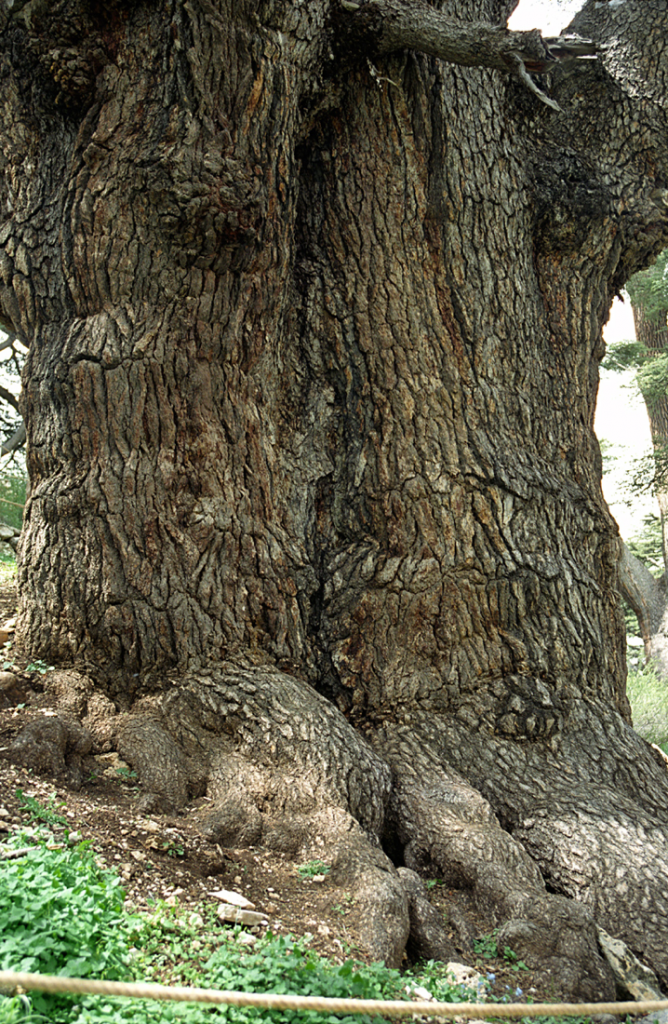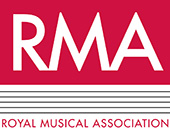Ever wondered what the gods of Mesopotamian mythology listened to? In this month’s student blog Tzu-Jang Wang explores some of the sounds of a recently discovered section from the Epic of Gilgamesh. Tzu-Jang majors in history at National Taiwan University. His interest lies in Assyriology, historical linguistics, and the cuneiform culture in general. He currently studies different versions and the textual evolution of the Babylonian Gilgamesh Epic under the one-year exchange program in SOAS.
World literature is a precious record of creativity and human imagination. Among the literatures in history, literature of ancient Mesopotamia is worth investigation because the ancient Near East is the first recorded human civilisation. In a newly discovered fragment of the Epic of Gilgamesh — one of the most symbolic literary works of the ancient Near East — the soundscape and the fauna of the Cedar Forest, as the realm of the gods in Mesopotamian mythology, is described in detail. This passage is quite important, for (1) it records the nature scene, which is rarely seen in literature of the ancient Near East, especially in Babylonian works; (2) it describes aspects of the Cedar Forest that were previously unknown; and (3) most importantly, it depicts the soundscape of the Cedar Forest by enumerating different sounds of animals. This article tries to analyse this passage with the combination of soundscape ecology and ancient Near East studies.
The theory of soundscape was popularised by the Canadian composer, music educator and environmentalist, Raymond Murray Schafer. In his book, The Soundscape (1994 [1977]), Schafer proposed the idea of soundscape: the sonic environment of one place. He claims that soundscape is similar to landscape, for the soundscape also provides a unique scene of a certain place or time. For example, the sound of the waves forms the soundscape of the seaside, and a modern city is crammed by industrial noises. Shafer further gives principles to classify and analyse soundscapes of different regions in the world (1994, pp. 135-144).
After the establishment of soundscape theory, other disciplines concerning soundscape were also developed, one of which is soundscape ecology. By identifying the different sounds in ecosystems, scholars are able to analyse the constituent elements of one certain soundscape and observe the relationship influence between sounds and ecosystems. Italian soundscape ecologist Almo Farina classifies sound into three categories: geophonies, biophonies, and anthrophonies (sic). Geophonies are sounds created by non-organic mechanisms, such as sound of wind or waterfalls; biophonies are sounds created by creatures; and anthrophonies are sounds created by artificial devices, such as the noise of machines in a factory (2014, pp. 7-10). In natural environments, geophonies make up most of the soundscape, while in an urban environment anthrophonies dominate. As an analysis, Farina gives a graph about the change of soundscapes dependant on different landscapes (fig.1).

Aside from modern approaches to existing sounds around the world, ancient references to soundscape deserve careful investigation as well. In The Soundscape, Schafer studies old diaries and travel accounts to reconstruct soundscapes of the past. It is especially appealing to seek evidence for any description about soundscape in the literature of one of the oldest known human civilisations like the ancient Near East. The ancient Near East text corpus provides a rich treasure representing life, thoughts, and narratives in the area, with music and sound of no exception as well. Take the Old Testament, the most famous literary works from ancient Near East, for example, the book of Nahum describes noises of the battle:
The noise of a whip, and the noise of the rattling of the wheels,
(3:2, King James Version)
And of the pransing horses, and of the jumping chariots.
A hymn from Psalms notes the song of Jewish captives at the riverside of Babylon (137), the ancient songs of Moses and of Deborah are recorded in the Exodus (15:1-21) and the Judges (5:2-31) respectively, and the book of Job writes down the incredible sounds made by God and from the sky (37:2-5).
However, reading the Bible is just as intriguing as studying cuneiform tablets excavated from the region of Mesopotamia. Among the literary works of Mesopotamia, the most notable one is the Epic of Gilgamesh telling the adventure and wanderings of Gilgamesh, king of Uruk. The Gilgamesh Epic was transmitted for more than one thousand years from southern Mesopotamia to a number of regions in the ancient Near East. Hence the Epic has multiple versions, yet the most complete and homogenised one is the Standard Babylonian Version, consisting of eleven separate tablets. The eleven-tablet version starts with the depiction of city of Uruk and the tyranny of king Gilgamesh, and turns to how the gods create Enkidu to stop the brutal deeds of Gilgamesh in the city. Enkidu was created as a wild man, unaware of human society until he was civilised and led to Uruk by a prostitute in the city. Here he meets Gilgamesh, wrestling with the king, before, at last, the two became great companions. In order to establish everlasting fame, Gilgamesh and Enkidu decide to go to the Cedar Forest to slay the giant Huwawa (or Humbaba), who was guardian of the forest. They go up to the divine and mystical Cedar Forest, which located in Lebanon in the Standard Babylonian Version, and successfully slay Huwawa with the aid of sun god Shamash.
The description of this Lebanese Cedar Forest in the Gilgamesh Epic is perhaps one the most detailed description of nature and soundscape in the literature of Mesopotamia. This passage is newly discovered in a tablet in the museum of Suleimaniyah, which is a city of Iraqi Kurdistan (Al-Rawi and George, 2014). The exact provenance of this tablet is unknown, but the tablet is from Babylonia judging by its scripts and can be roughly dated to the Neo-Assyrian period, 911-609 B.C. (Al-Rawi and George, 2014, p. 72). The tablet is a part of the fifth tablet of the Standard Babylonian Version, and it contains more lines which were totally unknown before. Some of the newly discovered lines consist of line 17-26 of the fifth tablet:
17 [Through] all the forest a bird began to sing:
(Al-Rawi and George, 2014, p. 77)
18 […] were answering one another, a constant din was the noise,
19 [A solitary(?)] tree-cricket set off a noisy chorus,
20 […] were singing a song, making the … pipe loud.
21 A wood pigeon was moaning, a turtle dove calling in answer.
22 [At the call of] the stork, the forest exults,
23 [at the cry of] the francolin, the forest exults in plenty.
24 [Monkey mothers] sing aloud, a youngster monkey shrieks:
25 [like a band(?)] of musicians and drummers(?),
26 daily they bash out a rhythm in the presence of Humbaba
The passage depicts the animals and sounds in the Cedar Forest, presenting both the biological diversity and heteroglossia in the Forest. It is a clear and direct description of soundscape, which includes sounds of tree-cricket, pigeon, turtle dove, stork, francolin, monkeys and some animals which cannot be distinguished. At last, Huwawa stands out, like the conductor of the forest orchestra.
Looking deeper into the soundscape passage of the Epic of Gilgamesh, the dichotomy between nature and culture can be observed. In the description, the Cedar Forest is a dense primary forest full of noisy sounds, more similar to a tropical jungle (fig. 2) than the remains of the Cedar Forest in modern Levantine area, for example, in Ouadi Qadisha, the World Heritage site in Lebanon (fig. 3). The Cedar Forest is thick, thorny and tangled (line 10, Al-Rawi and George, 2014, p. 77), and ‘resin [oozed] forth, drizzling down like rain’ (line 15, ibid.). It has a vivid fauna, including several birds, insects and monkeys. Here we can sense the contradiction between the City of Uruk and the Cedar Forest: the city is dominated by human architecture, while the forest is full of natural trees; the city is the symbol of human civilisation, while forest represent nature without humanity; in Uruk, human voices and artificial anthropohines make the soundscape, such as the hustle and bustle of noises, ‘where the drums are repeatedly beaten’ (tablet I, line 229, George 2003, p. 553), but the Cedar Forest is the kingdom of geophonies and biophonies. As Al-Rawi and George suggest, there is a symphony or rather a ‘cacophony’ in the Forest (2014, p. 74). Nonetheless, although the soundscape of the Cedar Forest is totally a different from the one of Uruk, there are still symmetries and similarities between the Forest and the city: both Huwawa and Gilgamesh are rulers of their realms, and both the Cedar Forest and Uruk are full of noises most of the time, yet the Cedar Forest is not so ‘wild’, just like the city, it has its own complexity and order.

Fig. 2 Example of a dense tropic jungle in southern Taiwan (accessed 25/06/2019) 
Fig. 3 Cedar forest of Ouadi Qadisha, Lebanon (accessed 25/06/2019)
The soundscape of the Cedar Forest also helps us to understand more about the episode of Huwawa adventure. Huwawa enjoys music like a human monarch and is immersed in the soundscape of the Cedar Forest. Because of this connection with the soundscape, the characteristics of Huwawa need to be reconsidered. First, it turns out that Huwawa is more connected to the Cedar Forest, and he is more than merely a barbaric beast (Davenport, 2007) or baneful demon (Tigay, 1982) as previous scholars have thought about. Second, the most significant iconographical feature of Huwawa is the intestine-like wrinkles on the face of Huwawa (Fig. 4). According to the newly discovered section, the connection between the Forest and Huwawa is stronger than previously expected. Hence it can be assumed that the face of Huwawa might be an expression of the cedar bark (Fig. 5). Moreover, perhaps the beheading of Huwawa is a metaphor for Gilgamesh’s killing of trees, both of which are considered wrong and unnecessary in this new tablet. Although this hypothesis is merely a conjecture requiring more supporting evidence and further investigation as well, it is clear that the new discovery can bring different aspect to look into literature of ancient Near East.

Fig. 4 Appearance of Huwawa (Humbaba) (Graff, 2012, cat. 127) 
Fig. 5 Cedar bark (accessed 25/06/2019)
To conclude, the seemingly unrelated disciplines may bring out surprising results, for the theory of soundscape ecology can interpret the newly discovered lines in the fifth tablet of the Standard Babylonian Gilgamesh Epic. Moreover, the passage of the Cedar Forest is of great importance because it is a direct example of soundscape in Babylonian Literature, and the different image of Huwawa suggests that scholars need to treat Huwawa more precisely. The Cedar Forest has its own order, and it forms a unique, distinguishable soundscape, so it is probable that other landscapes in the literature of ancient Near East may also have their featured soundscapes. This article is an initiate attempt, and a more thorough study to the soundscape of ancient Near East literature can be happily expected.
References
Al-Rawi, F. N. H., George A. R., 2014. ‘Back to the Cedar Forest: The Beginning and End of Tablet V of the Standard Babylonian Epic of Gilgameš’, Journal of Cuneiform Studies, vol. 66, pp. 69-90.
Davenport T., 2007. ‘An Anti-Imperialist Twist to the “Gilgamesh Epic”’, in Azize, J. and Weeks N. (eds.), Gilgameš and the World of Assyria. Proceedings of the Conference Held at Mandelbaum House, The University of Sydney, 21-23 July 2004. (Leuven: Peeters) pp. 1-24.
Farina, A. 2014. Soundscape Ecology: Principles, Patterns, Methods andApplications. London: Springer.
George A. R., 2003. The Babylonian Gilgamesh Epic: Introduction, Critical Edition, and Cuneiform Texts. Oxford: Oxford University Press.
Graff, S. B.,2012. Humbaba/Huwawa. Ph.D. diss., New York University.
Schafer, R. M., 1994 [1977]. The Soundscape: Our Sonic Environment and the Tuning of the World. Rochester, Vermont: Destiny Books.
Tigay, J. H., 1982. The Evolution of the Gilgamesh Epic. Wauconda: Bolchazy-Carducci.

Well done, Tzu-Jang!
Thought provoking. Interesting take on Huwawa.